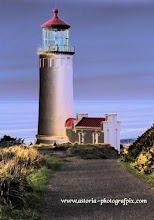 My mother, being a classic old Yankee, didn't go for new-fangled luxuries like gas or electric stoves when I was a child. We lived in the bottom two floors of an old Victorian-era hotel on Long Island Sound (the top two floors were closed off), and the stove was a four-burner cast iron model, very similar to the one pictured above, but black.
My mother, being a classic old Yankee, didn't go for new-fangled luxuries like gas or electric stoves when I was a child. We lived in the bottom two floors of an old Victorian-era hotel on Long Island Sound (the top two floors were closed off), and the stove was a four-burner cast iron model, very similar to the one pictured above, but black.The stove originally ran off an old coal furnace, which was another cast iron monster lurking in the basement, and was used for burning trash. I don't recall how the stove was heated after being disconnected from the coal furnace, but I do know the stove was on all the time - there was no "off" switch. To cook at a higher heat, you'd remove the rings in a burner, which had four rings you could remove with a little hook tool.
Baking required a knowledge of the wind speed and for some bizarre reason, barometric pressure. We had barometers all over the house, so that part was easy to figure out. Wind speed was another matter, usually requiring going out on the back porch, wetting a finger by sticking it in your mouth, and holding it up in the breeze. Needless to say, in the winter time, this was a tricky business. As I recall, baking was best in a southwest wind.
Consequently, any kind of baking that required the oven to be a specific temperature for a specific period of time was a head-scratcher. We'd read the directions on the box, check the barometer, go outside for a wind-check, and then decide whether or not to proceed. Some times of year the oven was hotter than others (winter, when the furnace was going), which also had to be factored into the equation. No, we did not have an oven thermometer.
So you'd just pour the brownie (or whatever) batter into a pan and wait. After 20 minutes or so, you'd have to get a potholder to open the oven door (it was a cast iron latch), grab a toothpick, and poke whatever it was in the baking pan. And you'd keep poking it every 10 minutes or so until the toothpick came out clean. Worked every time.
I learned to cook on that stove, and my first piece de resistance was two eggs, sunny-side up, cooked in an old cast iron frying pan (we had several). My parents were at the neighbors' for cocktails, and for some reason, I just had to try to cook on my own. I think I was about 6.
I cooked the eggs, and I was soooo proud of myself. I called my mother and told her what I'd done, and she asked me if I'd eaten the eggs. I said no, I didn't like sunny-side up eggs, I just wanted to see if I could do it. So she had me bring them to her at the cocktail party, and she ate them.
Casseroles were easy with an oven like that. I remember one night mother was having a dinner party, which she did often, even with that awful stove, and the casserole was ready. It was very heavy, and in a huge cast iron pan, so I had to help her get this damn thing out of the oven. We dropped it.
Everyone was waiting for dinner and seated at the table. We looked at each other over the mess, and both grabbed big spoons at the same time. We scooped it back into the casserole dish, sprinkled new cheese on top, and served it.
The guests raved about the casserole and asked my mother for the recipe. She said, "It's called 'Kitchen Floor Glop,' and the recipe is a secret," she said with a smile.
She finally got an electric stove in the 1960's. Which, in my opinion, took all the fun out of cooking.
Click here to see Elleda's photography at the Astoria Photografpix web site






No comments:
Post a Comment